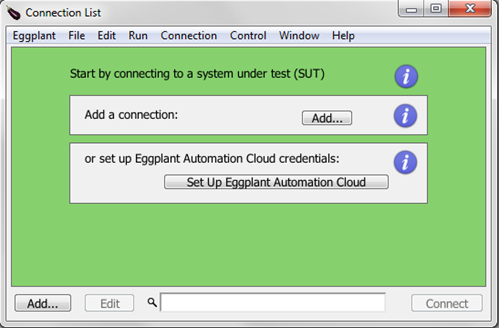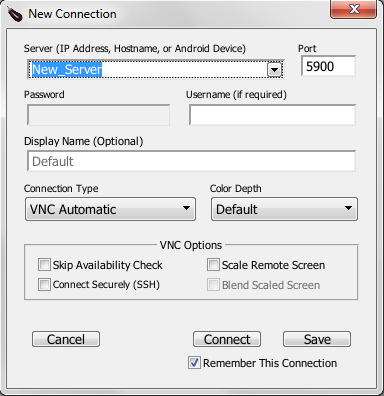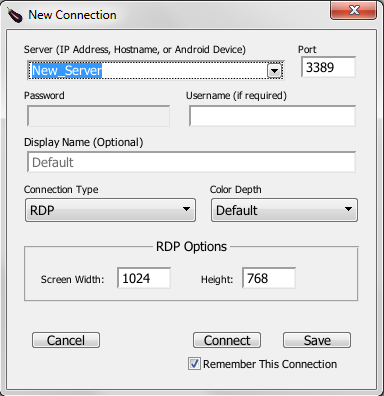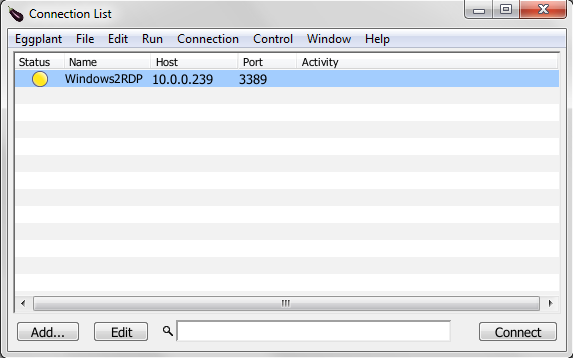Creating Your First SUT Connection in
The automated testing you perform with Eggplant Functional is based on a two-system model. This means that Eggplant Functional runs on one computer, and it can connect to any number of other computers that have the systems or applications you want to test.
The system where you install and run Eggplant Functional is known as the Eggplant machine. This system can be a Windows, Mac, or Linux machine. The Eggplant machine has everything needed to run the test, such as the scripts and associated images. The second system is the system under test, or SUT. The SUT is where the application to be tested is running. The SUT can be any system, including desktop machines, virtual machines, and mobile devices.
When you have your two systems set up, you can use the Connection List in Eggplant Functional to create a connection between them to begin your automated testing. Follow the instructions below to create your first SUT connection.
For information about setting up your Eggplant machine and SUT, see Getting Started with Eggplant Functional.
Using the Connection List
You can use the Connection List in Eggplant Functional to create connections between the Eggplant machine and your SUT. For your first connection, we’ll assume your SUT is a laptop or desktop machine. To learn about mobile devices and the other types of SUTs you might use, see Connecting to SUTs.
The instructions below include complete steps for creating a VNC connection and an RDP connection through the Connection List. See Eggplant Functional Connection Types: VNC vs. RDP for information about these two connection types.
Step by Step: Adding a VNC Connection
- Open the Connection List in Eggplant Functional by going to Connection > Connection List from the main menu. If you haven’t added connections to the Connection List, the window should look like this:

- Click Add to open the New Connection dialog box. You can use the Add button at the bottom of the window or in the Add a connection section.

In the Connection Type drop-down menu, note that VNC Automatic is chosen by default. This setting is appropriate for most VNC connections.
- Enter the IP address or hostname of the SUT in the Server (IP Address, Hostname, or Android Device) field. For VNC connections, the port is set to 5900 by default. You can change the value in the Port field if necessary.
- Enter the Password and Username, if required. For VNC connections, these fields refer to the values for the VNC server on the SUT.
- Enter a name for the connection in the Display Name field. Although this field is optional, it's useful to have descriptive text to identify the connection. If you don’t enter a display name, the value from the Server field is used as the name in the Connection List.
- Click Save to save the connection details to the Connection List. You can set or change other connection options before you save, but for your first connection, the default settings should be fine.
The new connection is added to the Connection List, which now appears as a list or table:

Step by Step: Adding an RDP Connection
- Open the Connection List in Eggplant Functional by going to Connection > Connection List from the main menu. If you haven’t added connections to the Connection List, the window should look like this:

- Click Add to open the New Connection dialog box. You can use the Add button at the bottom of the window or in the Add a connection section.

- In the Connection Type drop-down menu, select RDP to create an RDP connection.
- Enter the IP address or hostname of the SUT in the Server (IP Address, Hostname, or Android Device) field. For RDP connections, the port is set to 3389 by default. You can change the value in the Port field if necessary.
- Enter the Password and Username. For RDP connections, this information refers to the Windows user account for the SUT you are connecting to. This information is always required for RDP connections.
- Enter a name for the connection in the Display Name field. Although this field is optional, it's useful to have descriptive text to identify the connection. If you don’t enter a display name, the value from the Server field is used as the name in the Connection List.
- Click Save to save the connection details to the Connection List. You can set or change other connection options before you save, but for your first connection, the default settings should be fine.
The new connection is added to the Connection List, which now appears as a list or table:

For more information about using the Connection List and setting up other types of SUTs and connections, see Using the Eggplant Functional Connection List.
Connecting to Your SUT
After you define connections in the Connection List, you can connect to those SUTs from this window as well.
To open a connection you can:
- Select the connection in the list, then click Connect
- Double-click the connection in the list
While Eggplant Functional makes the connection, the Activity column updates with information to indicate progress, and the colored dot in the Status column changes as well.
You can also use the Connect command in SenseTalk with the display name of a connection to take advantage of the defined details for a SUT. The following code line shows how you would connect to the RDP SUT defined above:
Connect "Windows2RDP"
To find our more about using this command, visit the Connect Command.